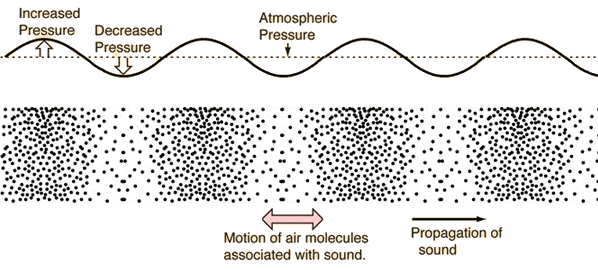
Waves are everywhere! Electromagnetic waves traverse the vacuum of space. Gravitational waves ripple spacetime itself. Mechanical waves propagate energy through air, water, and other media.
Sound is a great example of a mechanical wave. Vibrating molecules disturb their neighbors, which disturb their neighbors, and so on. The individual units don’t move far, but the energy they transfer spreads widely. When the molecules closest to your ear jiggle back and forth, you perceive sound.
Propagation of a sound wave in air. Image credit: HyperPhysics/Georgia State University
It’s easy to make your own mechanical wave machine at home. Center wooden skewers at approximately equal intervals (an inch or two apart works well) along a length of wide tape. Lay another strip of tape across the top of the skewers to hold them in place. Tension the system by attaching the ends of the tape to secure holding points. You’re ready to make waves! Lift and drop a single skewer end to generate a pulse. What happens?
Oscillate one skewer, and its neighbors move, too. The domino effect continues down the line even as the skewers themselves stay in their taped positions. Matter isn’t propagated along the machine, but energy is!
For slower waves & easier observation, add mass to the ends of the skewers. We used modeling clay to weigh down each point.
Written By: Caela Barry



